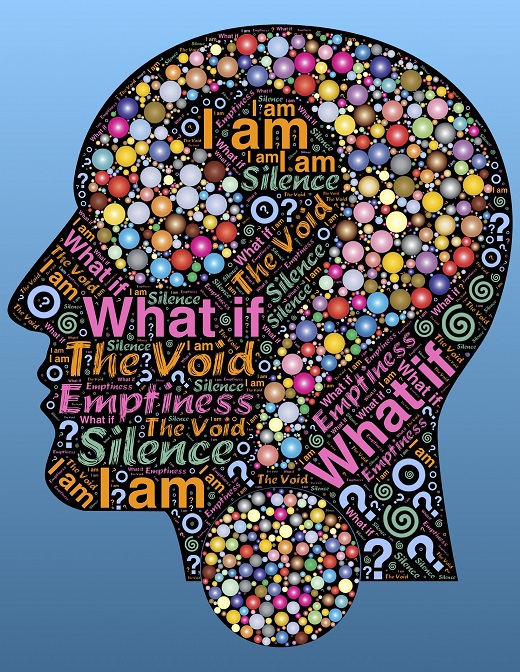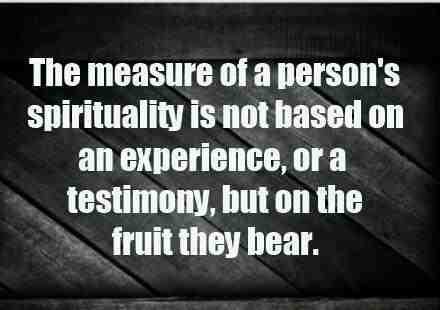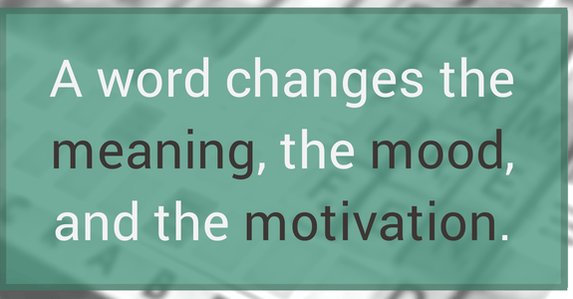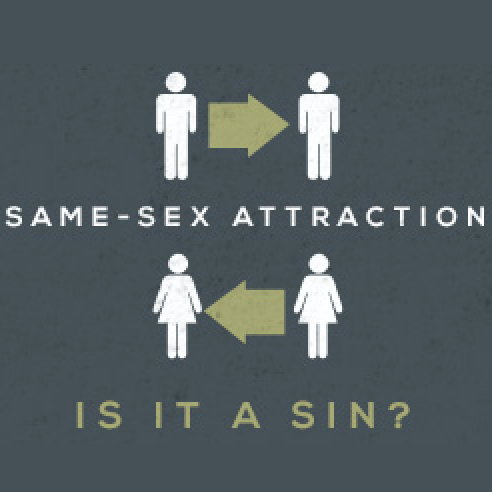Psychology
Is Psychology A Science?
The theories in psychology are powerful instruments, admirable constructs, and they satisfy important needs to explain and understand ourselves, our interactions with others, and with our environment. All theories - scientific or not - start with a problem. They aim to solve it by proving that what appears to be "problematic" is not. They re-state the conundrum, or introduce new data, new variables, a new classification, or new organizing principles. They incorporate the problem in a larger body of knowledge, or in a conjecture ("solution"). They explain why we thought we had an issue on our hands - and how it can be avoided, vitiated, or resolved. Scientific theories invite constant criticism and revision. They yield new problems. They are proven erroneous and are replaced by new models which offer better explanations and a more profound sense of understanding - often by solving these new problems.
From time to time, the successor theories constitute a break with everything known and done till then. These seismic convulsions are known as "paradigm shifts". Contrary to widespread opinion - even among scientists - science is not only about "facts". It is not merely about quantifying, measuring, describing, classifying, and organizing "things" (entities). It is not even concerned with finding out the "truth". Science is about providing us with concepts, explanations, and predictions (collectively known as "theories") and thus endowing us with a sense of understanding of our world. Scientific theories are allegorical or metaphoric. They revolve around symbols and theoretical constructs, concepts and substantive assumptions, axioms and hypotheses - most of which can never, even in principle, be computed, observed, quantified, measured, or correlated with the world "out there". By appealing to our imagination, scientific theories reveal what David Deutsch calls "the fabric of reality".
Like any other system of knowledge, science has its fanatics, heretics, and deviants. Instrumentalists, for instance, insist that scientific theories should be concerned exclusively with predicting the outcomes of appropriately designed experiments. Their explanatory powers are of no consequence. Positivists ascribe meaning only to statements that deal with observables and observations. Instrumentalists and positivists ignore the fact that predictions are derived from models, narratives, and organizing principles. In short: it is the theory's explanatory dimensions that determine which experiments are relevant and which are not. Forecasts - and experiments - that are not embedded in an understanding of the world (in an explanation) do not constitute science.

Granted, predictions and experiments are crucial to the growth of scientific knowledge and the winnowing out of erroneous or inadequate theories. But they are not the only mechanisms of natural selection. There are other criteria that help us decide whether to adopt and place confidence in a scientific theory or not. Is the theory aesthetic (parsimonious), logical, does it provide a reasonable explanation and, thus, does it further our understanding of the world?
David Deutsch in "The Fabric of Reality" (p. 11): "... (I)t is hard to give a precise definition of 'explanation' or 'understanding'. Roughly speaking, they are about 'why' rather than 'what'; about the inner workings of things; about how things really are, not just how they appear to be; about what must be so, rather than what merely happens to be so; about laws of nature rather than rules of thumb. They are also about coherence, elegance, and simplicity, as opposed to arbitrariness and complexity ."
Reductionists and emergentists ignore the existence of a hierarchy of scientific theories and meta-languages. They believe - and it is an article of faith, not of science - that complex phenomena (such as the human mind) can be reduced to simple ones (such as the physics and chemistry of the brain). Furthermore, to them the act of reduction is, in itself, an explanation and a form of pertinent understanding. Human thought, fantasy, imagination, and emotions are nothing but electric currents and spurts of chemicals in the brain, they say.

Holists, on the other hand, refuse to consider the possibility that some higher-level phenomena can, indeed, be fully reduced to base components and primitive interactions. They ignore the fact that reductionism sometimes does provide explanations and understanding. The properties of water, for instance, do spring forth from its chemical and physical composition and from the interactions between its constituent atoms and subatomic particles. Still, there is a general agreement that scientific theories must be abstract (independent of specific time or place), inter-subjectively explicit (contain detailed descriptions of the subject matter in unambiguous terms), logically rigorous (make use of logical systems shared and accepted by the practitioners in the field), empirically relevant (correspond to results of empirical research), useful (in describing and/or explaining the world), and provide typologies and predictions.
We Are Helping 1000 Businesses Amplify Their Online Presence
A scientific theory should resort to primitive (atomic) terminology and all its complex (derived) terms and concepts should be defined in these indivisible terms. It should offer a map unequivocally and consistently connecting operational definitions to theoretical concepts. Operational definitions that connect to the same theoretical concept should not contradict each other (be negatively correlated). They should yield agreement on measurement conducted independently by trained experimenters. But investigation of the theory of its implication can proceed even without quantification. Theoretical concepts need not necessarily be measurable or quantifiable or observable.
But a scientific theory should afford at least four levels of quantification of its operational and theoretical definitions of concepts: nominal (labeling), ordinal (ranking), interval and ratio. As we said, scientific theories are not confined to quantified definitions or to a classificatory apparatus. To qualify as scientific they must contain statements about relationships (mostly causal) between concepts - empirically-supported laws and/or propositions (statements derived from axioms).
Philosophers like Carl Hempel and Ernest Nagel regard a theory as scientific if it is hypothetico-deductive. To them, scientific theories are sets of inter-related laws. We know that they are inter-related because a minimum number of axioms and hypotheses yield, in an inexorable deductive sequence, everything else known in the field the theory pertains to. Explanation is about retrodiction - using the laws to show how things happened. Prediction is using the laws to show how things will happen. Understanding is explanation and prediction combined. William Whewell augmented this somewhat simplistic point of view with his principle of "consilience of inductions". Often, he observed, inductive explanations of disparate phenomena are unexpectedly traced to one underlying cause.
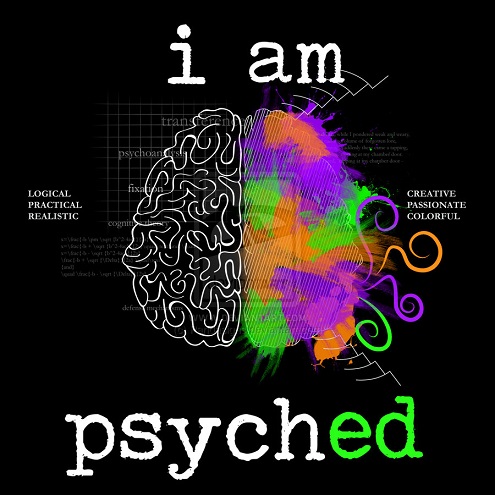
This is what scientific theorizing is about - finding the common source of the apparently separate. This omnipotent view of the scientific endeavor competes with a more modest, semantic school of philosophy of science. Many theories - especially ones with breadth, width, and profundity, such as Darwin's theory of evolution - are not deductively integrated and are very difficult to test (falsify) conclusively. Their predictions are either scant or ambiguous. Scientific theories, goes the semantic view, are amalgams of models of reality. These are empirically meaningful only inasmuch as they are empirically (directly and therefore semantically) applicable to a limited area.
A typical scientific theory is not constructed with explanatory and predictive aims in mind. Quite the opposite: the choice of models incorporated in it dictates its ultimate success in explaining the Universe and predicting the outcomes of experiments. Are psychological theories scientific theories by any definition (prescriptive or descriptive)? Hardly. First, we must distinguish between psychological theories and the way that some of them are applied (psychotherapy and psychological plots). Psychological plots are the narratives co-authored by the therapist and the patient during psychotherapy. These narratives are the outcomes of applying psychological theories and models to the patient's specific circumstances. Psychological plots amount to storytelling - but they are still instances of the psychological theories used. The instances of theoretical concepts in concrete situations form part of every theory.
Actually, the only way to test psychological theories - with their dearth of measurable entities and concepts - is by examining such instances (plots). Storytelling has been with us since the days of campfire and besieging wild animals. It serves a number of important functions: amelioration of fears, communication of vital information (regarding survival tactics and the characteristics of animals, for instance), the satisfaction of a sense of order (predictability and justice), the development of the ability to hypothesize, predict and introduce new or additional theories and so on. We are all endowed with a sense of wonder. The world around us in inexplicable, baffling in its diversity and myriad forms. We experience an urge to organize it, to "explain the wonder away", to order it so that we know what to expect next (predict).
Health Wellbeing Diet Fitness Diseases Nutrition
These are the essentials of survival. But while we have been successful at imposing our mind on the outside world - we have been much less successful when we tried to explain and comprehend our internal universe and our behavior. Psychology is not an exact science, nor can it ever be. This is because its "raw material" (humans and their behavior as individuals and en masse) is not exact. It will never yield natural laws or universal constants (like in physics). Experimentation in the field is constrained by legal and ethical rules.
Humans tend to be opinionated, develop resistance, and become self-conscious when observed. The relationship between the structure and functioning of our (ephemeral) mind, the structure and modes of operation of our (physical) brain, and the structure and conduct of the outside world have been a matter for heated debate for millennia. Broadly speaking, there are two schools of thought. One camp identify the substrate (brain) with its product (mind). Some of these scholars postulate the existence of a lattice of preconceived, born, categorical knowledge about the universe - the vessels into which we pour our experience and which mould it. Others within this group regard the mind as a black box. While it is possible in principle to know its input and output, it is impossible, again in principle, to understand its internal functioning and management of information. To describe this input-output mechanism, Pavlov coined the word "conditioning", Watson adopted it and invented "behaviorism", Skinner came up with "reinforcement".
Epiphenomenologists (proponents of theories of emergent phenomena) regard the mind as the by-product of the complexity of the brain's "hardware" and "wiring". But all of them ignore the psychophysical question: what IS the mind and HOW is it linked to the brain? The other camp assumes the airs of "scientific" and "positivist" thinking. It speculates that the mind (whether a physical entity, an epiphenomenon, a non-physical principle of organization, or the result of introspection) has a structure and a limited set of functions. It is argued that a "mind owner's manual" could be composed, replete with engineering and maintenance instructions. It proffers a dynamics of the psyche. The most prominent of these "psychodynamists" was, of course, Freud. Though his disciples (Adler, Horney, the object-relations lot) diverged wildly from his initial theories, they all shared his belief in the need to "scientify" and objectify psychology. Freud, a medical doctor by profession (neurologist) - preceded by another M.D., Josef Breuer - put forth a theory regarding the structure of the mind and its mechanics: (suppressed) energies and (reactive) forces.
Flow charts were provided together with a method of analysis, a mathematical physics of the mind. Many hold all psychodynamic theories to be a mirage. An essential part is missing, they observe: the ability to test the hypotheses, which derive from these "theories". Though very convincing and, surprisingly, possessed of great explanatory powers, being non-verifiable and non-falsifiable as they are - psychodynamic models of the mind cannot be deemed to possess the redeeming features of scientific theories.
Deciding between the two camps was and is a crucial matter. Consider the clash - however repressed - between psychiatry and psychology. The former regards "mental disorders" as euphemisms - it acknowledges only the reality of brain dysfunctions (such as biochemical or electric imbalances) and of hereditary factors. The latter (psychology) implicitly assumes that something exists (the "mind", the "psyche") which cannot be reduced to hardware or to wiring diagrams. Talk therapy is aimed at that something and supposedly interacts with it. But perhaps the distinction is artificial. Perhaps the mind is simply the way we experience our brains. Endowed with the gift (or curse) of introspection, we experience a duality, a split, constantly being both observer and observed. Moreover, talk therapy involves TALKING - which is the transfer of energy from one brain to another through the air. This is a directed, specifically formed energy, intended to trigger certain circuits in the recipient brain.
It should come as no surprise if it were to be discovered that talk therapy has clear physiological effects upon the brain of the patient (blood volume, electrical activity, discharge and absorption of hormones, etc.) All this would be doubly true if the mind were, indeed, only an emergent phenomenon of the complex brain - two sides of the same coin. Psychological theories of the mind are metaphors of the mind. They are fables and myths, narratives, stories, hypotheses, conjunctures. They play (exceedingly) important roles in the psychotherapeutic setting - but not in the laboratory. Their form is artistic, not rigorous, not testable, less structured than theories in the natural sciences. The language used is polyvalent, rich, effusive, ambiguous, evocative, and fuzzy - in short, metaphorical. These theories are suffused with value judgments, preferences, fears, post facto and ad hoc constructions. None of this has methodological, systematic, analytic and predictive merits.
Still, the theories in psychology are powerful instruments, admirable constructs, and they satisfy important needs to explain and understand ourselves, our interactions with others, and with our environment. The attainment of peace of mind is a need, which was neglected by Maslow in his famous hierarchy. People sometimes sacrifice material wealth and welfare, resist temptations, forgo opportunities, and risk their lives - in order to secure it. There is, in other words, a preference of inner equilibrium over homeostasis. It is the fulfillment of this overwhelming need that psychological theories cater to. In this, they are no different to other collective narratives (myths, for instance). Still, psychology is desperately trying to maintain contact with reality and to be thought of as a scientific discipline. It employs observation and measurement and organizes the results, often presenting them in the language of mathematics. In some quarters, these practices lends it an air of credibility and rigorousness. Others snidely regard that as an elaborate camouflage and a sham. Psychology, they insist, is a pseudo-science. It has the trappings of science but not its substance.
Worse still, while historical narratives are rigid and immutable, the application of psychological theories (in the form of psychotherapy) is "tailored" and "customized" to the circumstances of each and every patient (client). The user or consumer is incorporated in the resulting narrative as the main hero (or anti-hero). This flexible "production line" seems to be the result of an age of increasing individualism. True, the "language units" (large chunks of denotates and connotates) used in psychology and psychotherapy are one and the same, regardless of the identity of the patient and his therapist. In psychoanalysis, the analyst is likely to always employ the tripartite structure (Id, Ego, Superego). But these are merely the language elements and need not be confused with the idiosyncratic plots that are weaved in every encounter. Each client, each person, and his own, unique, irreplicable, plot.
To qualify as a "psychological" (both meaningful and instrumental) plot, the narrative, offered to the patient by the therapist, must be:
1.. All-inclusive (anamnetic) - It must encompass, integrate and incorporate all the facts known about the protagonist.
2.. Coherent - It must be chronological, structured and causal.
3.. Consistent - Self-consistent (its subplots cannot contradict one another or go against the grain of the main plot) and consistent with the observed phenomena (both those related to the protagonist and those pertaining to the rest of the universe).
4.. Logically compatible - It must not violate the laws of logic both internally (the plot must abide by some internally imposed logic) and externally (the Aristotelian logic which is applicable to the observable world).
5.. Insightful (diagnostic) - It must inspire in the client a sense of awe and astonishment which is the result of seeing something familiar in a new light or the result of seeing a pattern emerging out of a big body of data. The insights must constitute the inevitable conclusion of the logic, the language, and of the unfolding of the plot.
- 6.. Aesthetic - The plot must be both plausible and "right", beautiful, not cumbersome, not awkward, not discontinuous, smooth, parsimonious, simple, and so on.
- 7.. Parsimonious - The plot must employ the minimum numbers of assumptions and entities in order to satisfy all the above conditions.
- 8.. Explanatory - The plot must explain the behavior of other characters in the plot, the hero's decisions and behavior, why events developed the way they did.
- 9.. Predictive (prognostic) - The plot must possess the ability to predict future events, the future behavior of the hero and of other meaningful figures and the inner emotional and cognitive dynamics.
10.. Therapeutic - With the power to induce change, encourage functionality, make the patient happier and more content with himself (ego-syntony), with others, and with his circumstances.
11.. Imposing - The plot must be regarded by the client as the preferable organizing principle of his life's events and a torch to guide him in the dark (vade mecum).
12.. Elastic - The plot must possess the intrinsic abilities to self organize, reorganize, give room to emerging order, accommodate new data comfortably, and react flexibly to attacks from within and from without. In all these respects, a psychological plot is a theory in disguise. Scientific theories satisfy most of the above conditions as well. But this apparent identity is flawed. The important elements of testability, verifiability, refutability, falsifiability, and repeatability - are all largely missing from psychological theories and plots. No experiment could be designed to test the statements within the plot, to establish their truth-value and, thus, to convert them to theorems or hypotheses in a theory.
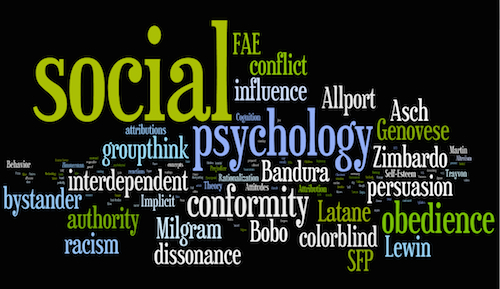
There are four reasons to account for this inability to test and prove (or falsify) psychological theories:
1.. Ethical - Experiments would have to be conducted, involving the patient and others. To achieve the necessary result, the subjects will have to be ignorant of the reasons for the experiments and their aims. Sometimes even the very performance of an experiment will have to remain a secret (double blind experiments). Some experiments may involve unpleasant or even traumatic experiences. This is ethically unacceptable.
2.. The Psychological Uncertainty Principle - The initial state of a human subject in an experiment is usually fully established. But both treatment and experimentation influence the subject and render this knowledge irrelevant. The very processes of measurement and observation influence the human subject and transform him or her - as do life's circumstances and vicissitudes.
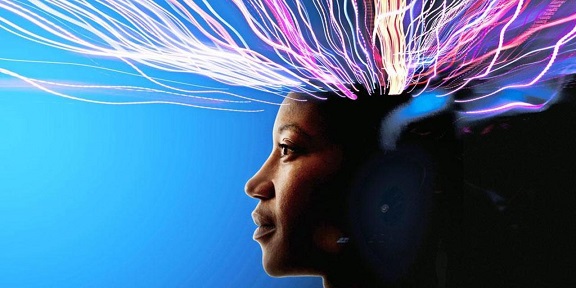
3.. Uniqueness - Psychological experiments are, therefore, bound to be unique, unrepeatable, cannot be replicated elsewhere and at other times even when they are conducted with the SAME subjects. This is because the subjects are never the same due to the aforementioned psychological uncertainty principle. Repeating the experiments with other subjects adversely affects the scientific value of the results.
4.. The undergeneration of testable hypotheses - Psychology does not generate a sufficient number of hypotheses, which can be subjected to scientific testing. This has to do with the fabulous (=storytelling) nature of psychology. In a way, psychology has affinity with some private languages. It is a form of art and, as such, is self-sufficient and self-contained. If structural, internal constraints are met - a statement is deemed true even if it does not satisfy external scientific requirements.
So, what are psychological theories and plots good for? They are the instruments used in the procedures which induce peace of mind (even happiness) in the client.
This is done with the help of a few embedded mechanisms:
1.. The Organizing Principle - Psychological plots offer the client an organizing principle, a sense of order, meaningfulness, and justice, an inexorable drive toward well defined (though, perhaps, hidden) goals, the feeling of being part of a whole. They strive to answer the "why's" and "how's" of life. They are dialogic. The client asks: "why am I (suffering from a syndrome) and how (can I successfully tackle it)".
Then, the plot is spun: "you are like this not because the world is whimsically cruel but because your parents mistreated you when you were very young, or because a person important to you died, or was taken away from you when you were still impressionable, or because you were sexually abused and so on".
We Are Helping 1000 Businesses Amplify Their Online Presence
The client is becalmed by the very fact that there is an explanation to that which until now monstrously taunted and haunted him, that he is not the plaything of vicious Gods, that there is a culprit (focusing his diffuse anger). His belief in the existence of order and justice and their administration by some supreme, transcendental principle is restored. This sense of "law and order" is further enhanced when the plot yields predictions which come true (either because they are self-fulfilling or because some real, underlying "law" has been discovered).
2.. The Integrative Principle - The client is offered, through the plot, access to the innermost, hitherto inaccessible, recesses of his mind.He feels that he is being reintegrated, that "things fall into place". In psychodynamic terms, the energy is released to do productive and positive work, rather than to induce distorted and destructive forces.

3.. The Purgatory Principle - In most cases, the client feels sinful, debased, inhuman, decrepit, corrupting, guilty, punishable, hateful, alienated, strange, mocked and so on. The plot offers him absolution. The client's suffering expurgates, cleanses, absolves, and atones for his sins and handicaps. A feeling of hard won achievement accompanies a successful plot. The client sheds layers of functional, adaptive stratagems rendered dysfunctional and maladaptive. This is inordinately painful. The client feels dangerously naked, precariously exposed.
He then assimilates the plot offered to him, thus enjoying the benefits emanating from the previous two principles and only then does he develop new mechanisms of coping. Therapy is a mental crucifixion and resurrection and atonement for the patient's sins. It is a religious experience. Psychological theories and plots are in the role of the scriptures from which solace and consolation can be always gleaned.
Why Is The Law Of Attraction So Hard To Apply?
Finding Motivation And Bouncing Back From Difficult Times
Law Of Attraction Relationships
Self Hypnosis-What It Can Help You Achieve
Mental Toughness-What Is Stress And How To Manage It Effectively
Cheap Airline Flights And Best Travel Deals
Tweet
Follow @Charlesfrize

